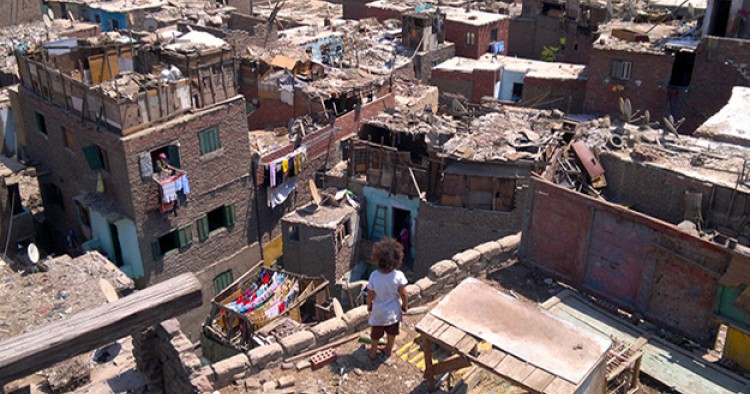This article was first published by the Atlantic.
The government of former Egyptian President Hosni Mubarak had a vision for Cairo's future. In 2007, it put forth a plan dubbed "Cairo 2050," and among its objectives was to create wide avenues, green spaces, and new or revamped tourist sites, such as near the Pyramids.
However attractive such a scene may sound, it would mean displacing hundreds of thousands—if not millions—of people from their neighborhoods, many of them Cairo's poorer residents who live in informal areas, or ashwa'iyyat. A whopping 70 percent of Cairenes live in these areas, where they build cheap housing illegally, often on agricultural land.
It is not a desire to cheat the system that drives such building. The Egyptian government's urban planning policies for the past 40 years have mainly been concerned with creating spaces and housing that cater to elites. As a result, low-income housing is difficult, if not impossible, to come by, and those with modest means must make do.
Cairo 2050 aimed to move these inhabitants from the city's more central areas to its desert outskirts and fill the emptied spaces with eye-pleasing features as well as businesses. The plan, according to Diane Singerman, a professor at American University in Washington, D.C., and an Egypt specialist, "would graft the skyline of Abu Dhabi or Dubai onto the Nile.
Yahia Shawkat, an Egyptian architect and activist, says that the plan stems from the government's "inexorable drive to create revenue from Cairo's prime real estate," adding that there is "no guarantee" that any revenue would be passed to the evicted residents.
Read the full article on the Atlantic.
The Middle East Institute (MEI) is an independent, non-partisan, non-for-profit, educational organization. It does not engage in advocacy and its scholars’ opinions are their own. MEI welcomes financial donations, but retains sole editorial control over its work and its publications reflect only the authors’ views. For a listing of MEI donors, please click here.













